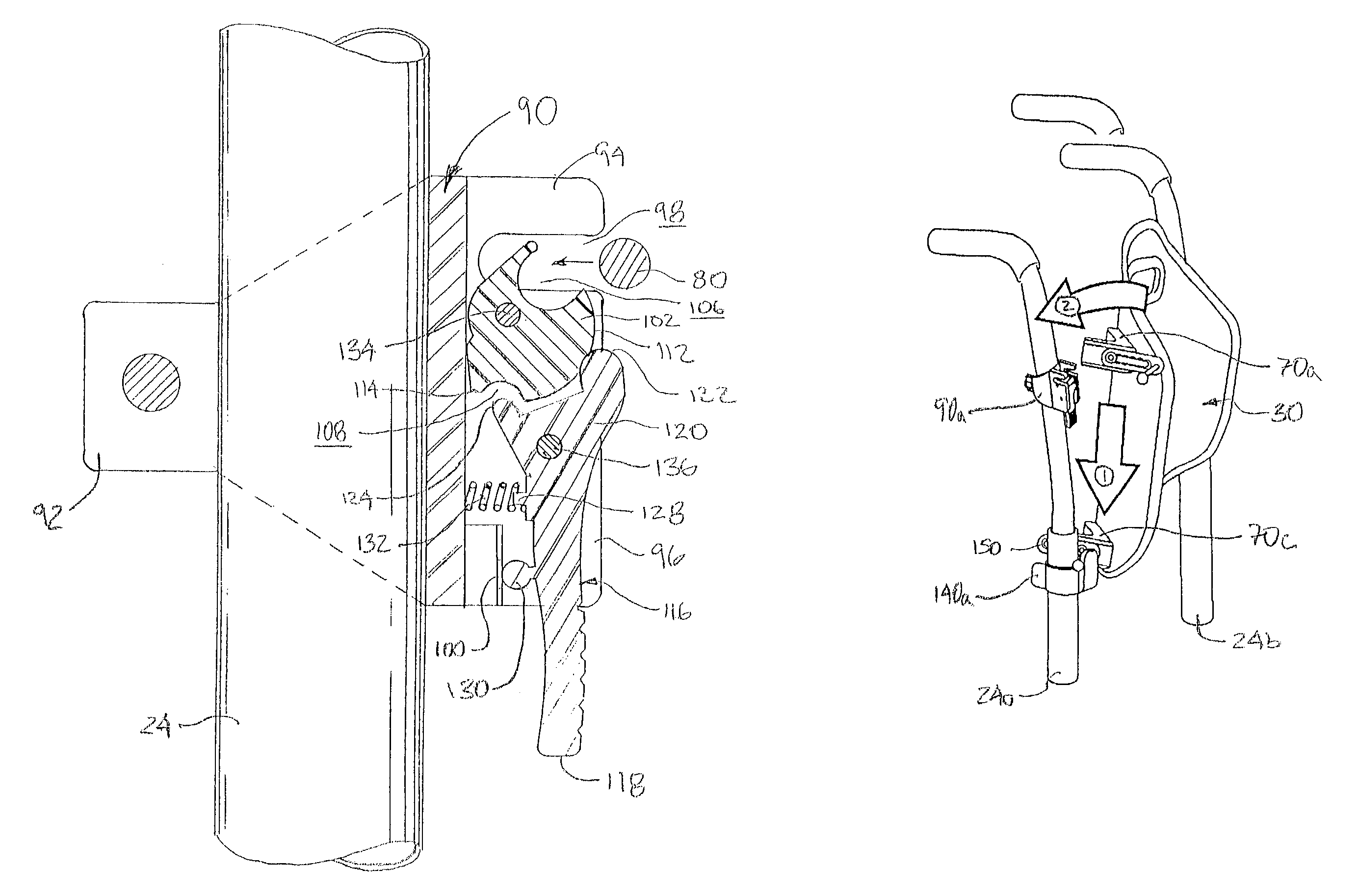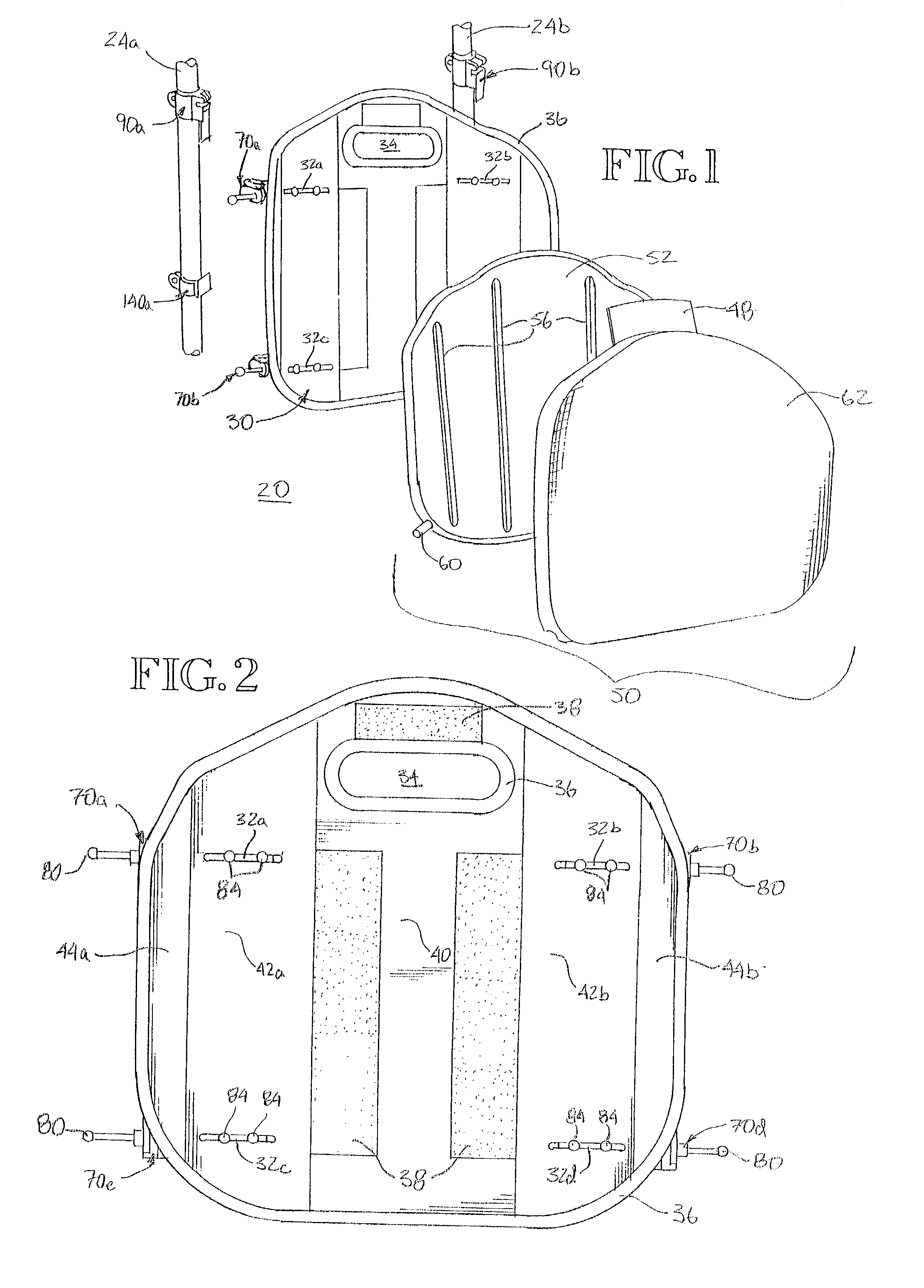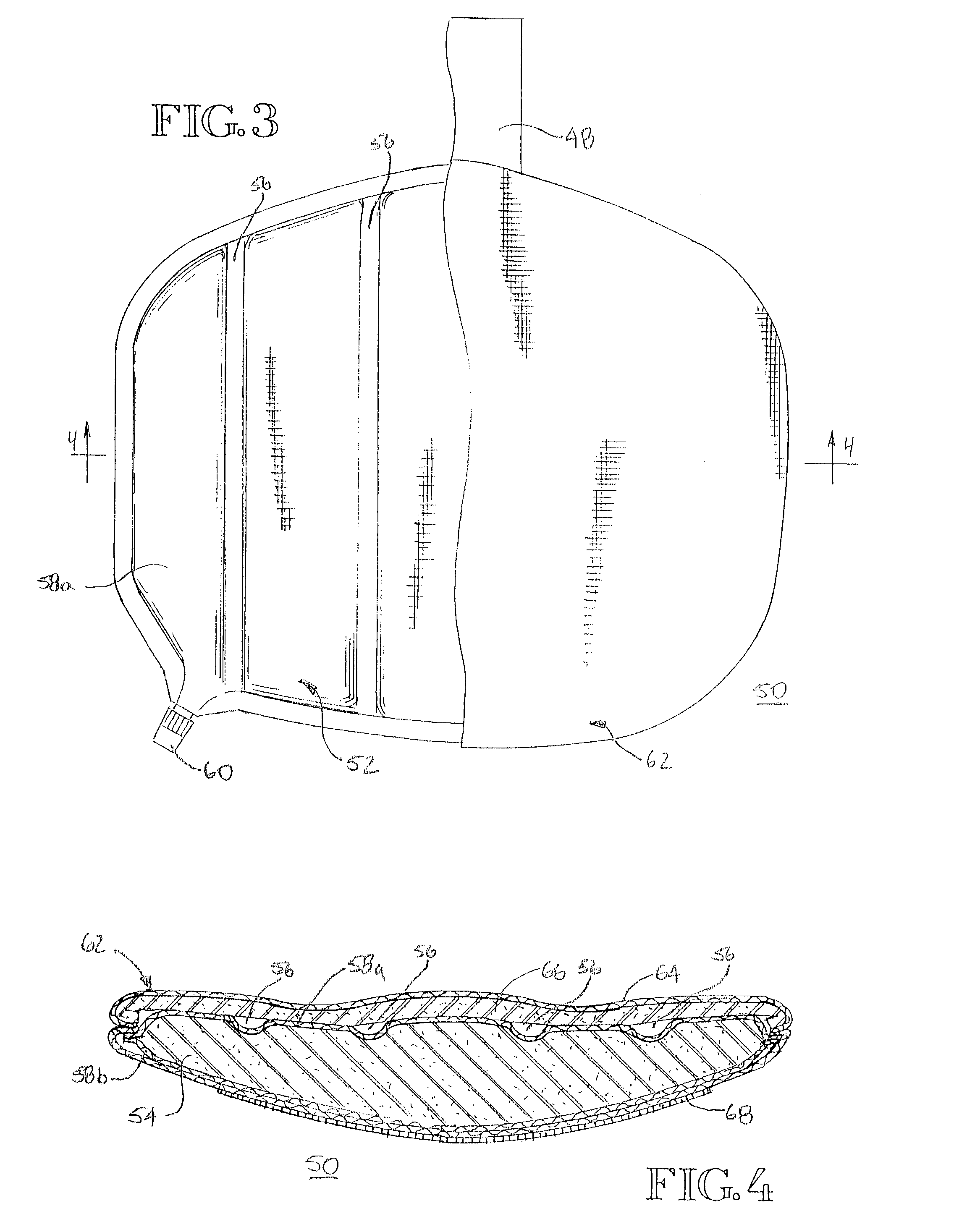Adjustable quick release seatback system particularly for use with wheelchairs
a seatback and wheelchair technology, applied in the field of wheelchair seatbacks, can solve the problems of reduced function and mobility, impaired respiration, impaired swallowing, etc., and achieve the effect of increasing the adjustability of the seatback position, positive positioning and retention of the cushion to the seatback
- Summary
- Abstract
- Description
- Claims
- Application Information
AI Technical Summary
Benefits of technology
Problems solved by technology
Method used
Image
Examples
Embodiment Construction
[0032]Referring then to the several Figures wherein like numerals indicate like parts, and more particularly to FIGS. 1, 2 and 5, the general components of the invention are shown. Seatback system 20 is intended to be mounted to a conventional wheelchair having a pair of vertical posts or canes 24a and 24b. Seatback system 20 comprises shell 30 to which are mounted L-brackets with pin bar assemblies 70a, 70b, 70c, and 70d (generally referred to as pin bar assemblies 70 unless otherwise indicated, as each assembly consists of identical components); upper mounting clips 90a and 90b; lower clips 140c and 140d; and cushion assembly 50. All structural components are preferably manufactured from lightweight metals such as aluminum or alloys such as aluminum-magnesium, or high strength polymers such as acrylic-butadiene-styrene (ABS) resin. The composition of cushion assembly 50 will be described in detail below.
[0033]Beginning first with shell 30, it is preferably a hard rigid matrix, whi...
PUM
 Login to View More
Login to View More Abstract
Description
Claims
Application Information
 Login to View More
Login to View More - R&D
- Intellectual Property
- Life Sciences
- Materials
- Tech Scout
- Unparalleled Data Quality
- Higher Quality Content
- 60% Fewer Hallucinations
Browse by: Latest US Patents, China's latest patents, Technical Efficacy Thesaurus, Application Domain, Technology Topic, Popular Technical Reports.
© 2025 PatSnap. All rights reserved.Legal|Privacy policy|Modern Slavery Act Transparency Statement|Sitemap|About US| Contact US: help@patsnap.com



